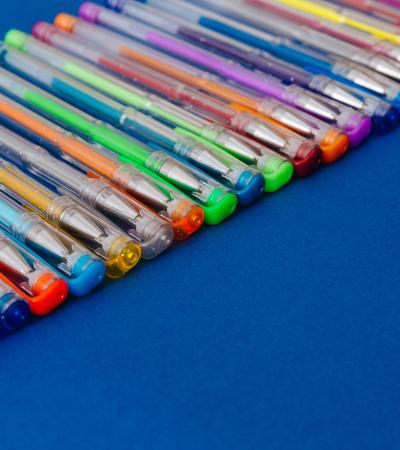“STEM is intimidating. Some teens think it’s a subject geared for students that already make straight A’s or already know that they want to go to college,” says Analiza Perez-Gomez, librarian at the Laredo Public Library in Texas. “But libraries level the playing ground. There are no obstacles to STEM here. Teens can try out STEM concepts for the first time with no added pressure.”
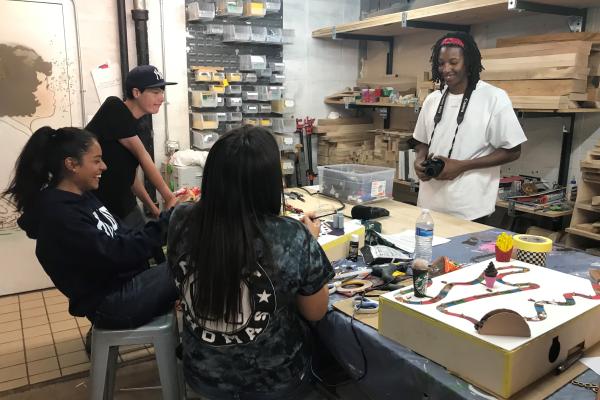
Since 2019, Laredo Public Library has partnered with Build a Better Book, a University of Colorado Boulder project that works with a growing network of public and school libraries to engage youth in developing STEM skills. Using low- and high-tech Makerspace tools, Build a Better Book trains participants to design and create accessible picture books, graphics and games for people with visual impairments and other physical and learning disabilities.
Build a Better Book isn’t just about STEM, but about cultivating empathy and finding meaning behind technological creations. Founded in 2015 by computer science professor Tom Yeh, the project began at CU Science Discovery as a way to bring accessibility-enhancing technology out of campus labs and into the hands of teens and others.
Finding empathy in creation
After receiving a travel grant to visit the University of Colorado Boulder for training, Perez-Gomez returned to Texas ready to implement Build a Better Book at her library. The first summer program was held over the course of eight weeks. Through virtual meetings, the participants, aged 10 to 18, learned how people with visual impairments navigate the world. Participants took home a kit with Makerspace materials to create objects that can be paired with classic children’s books.
“The teens took books and made them into objects that tell the story,” Perez-Gomez says. “For The Very Hungry Caterpillar, you can make tiny fruits with 3D pens representing all the food the caterpillar eats. It’s also not just about the creation of the objects, but about how and why you made them.”
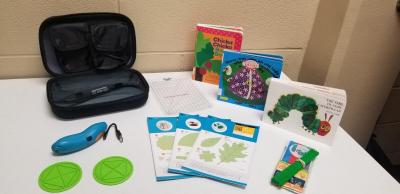
Since the first summer program, Build a Better Book at Laredo Public Library has been adapted for various audiences: as a shorter summer program for younger kids, for high schoolers to get community service hours, and as a community outreach program to local elementary schools for kids as young as third grade. “In the library, we do a shorter version of the program with one hour dedicated to empathy and another to the basics of braille – there’s a lot of teen interest in braille and braille translation,” Perez-Gomez says. “For younger kids, instead of 3D pens, we will use clay rolled up into small dots to add to picture books to act as braille.”
Seek local partnerships to create for
Build a Better Book encourages libraries to seek potential community partners, such as senior centers and schools for the blind, to be clients for teen designers.
“Having a client and an end goal that a teen can work towards makes the impact so much deeper,” says Stacey Forsyth, project leader and director of CU Science Discovery. “When a student knows they are designing for someone else who will actually use a product they crafted, the motivation kicks in.”
End products can be materials made from 3D printers or low-tech handcrafted designs like books made of high-contrast felt or other fabrics. “Know that a 3D printer is not the holy grail of tactile imagery,” says Kathryn Penzkover, project manager at CU Science Discovery. “Low-tech approaches, like puffy paint, can be rich in texture and offer a great tactile experience for the user.”
Teens participating in Build a Better Book are encouraged to communicate with, and step into the shoes of, the client they are designing for. Through this process, participants learn how to make changes and adaptations to the varying needs of each person.
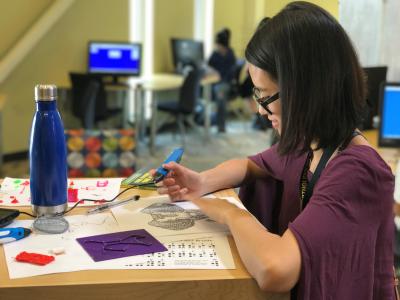
Small in scale, large in reach
The Build a Better Book summer internship program is run at multiple sites across the country including libraries and schools. Tim Ogino, internship site leader at CU Science Discovery, says “Even though we have this big network across the country, the projects are so local and personal.”
Despite the varying sites and projects, the focus of Build a Better Book remains the same: encourage the next generation to have a view of engineering that is, as Ogino says, “more human-driven and based in communication.”
Using training and resources from Build a Better Book, Mountain Lakes Public Library in New Jersey is working in partnership with St. Joseph’s School for the Blind to have local teen interns design 3D printed materials for students at the school. Ian Matty, makerspace director, says that “Build a Better Book is ultimately about creativity, connecting literacies and meaningful making. Libraries are for the entire community, so we connected with the St. Joseph’s School on the basis that we are here to work with you as a trusted partner and to deliver on our promises.”
The library’s group of teen participants really embraces the mission of Build a Better Book. Library director Jennifer Lynch says, “The teens are self-directed, and they come in on their own time. We have alumni who come back while they are in college to continue to make updates to products they created in high school. We can’t get them out of here! It’s a great problem to have.”
A user-friendly world
The library is a trusted community resource that can provide long-and short-term projects for local partners. Through Makerspace creation and Build a Better Book training, Mountain Lakes Public Library has created 3D-printed cochlear implants for dolls so deaf children at a local organization can be represented. Current summer interns are working with St. Joseph’s School for the Blind to create braille garden signs and tactile braille programming blocks for students to develop computer science skills.
The capabilities of Build a Better Book and the library’s Makerspace have barely scratched the surface of what’s possible. “The program has been empowering to so many generations in town,” Lynch says. “Teen participants tell us they weren’t used to collaborating on this level. They didn’t understand how important it was to work with each other before.”
“The program continues to develop as we reach more people through universal design,” Matty says. “We aim to live in a user-friendly world and know that we can make a difference here in our community. We have our fall internship program coming up shortly, and we know the products created from that will be things we hadn’t thought of before.”
Proving that STEM careers are possible
Many participants of Build a Better Book at the Laredo Public Library and the Mountain Lakes Public Library have been introduced to STEM in a context outside of their schools, which can be a game-changer to those uninitiated to the subject.
”All of our projects require no prior experience,” Matty says. “We have teens in college now who have told me that this program introduced them to aspects of engineering they didn’t know were possible and has inspired a career path. A lot of our teens have also written about their experiences in college application essays.”
Perez-Gomez also has big dreams for the project's future at Laredo Public Library. Her long-term goal is for the participants to create accessible books and materials that can be circulated and utilized by visually impaired members of the community. Right now, the end products, especially those made with 3D pens, are too fragile to go into circulation so participants take their objects home. “There’s so much pride in that!” Perez-Gomez says. “These are kids that never used a 3D printer or pen before or weren’t in the classes at school to be able to experience this type of technology firsthand. The objects they make remind them that a STEM career is possible if they wish to pursue it further. To me, that’s the best result of this program.”
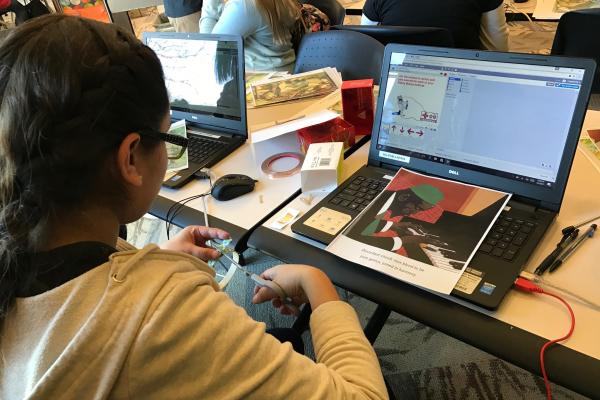
How to get involved
If libraries are interested in joining the network, fill out the interest form online. “Nothing is required,” says Penzkover. “Libraries can do their own research on our website, look at our videos and previous projects and run with it in their own exciting direction. Libraries that don’t have Makerspaces can still take these ideas and use them.”
Build a Better Book has attracted a great mix of library workers all with the goal of getting teens involved in their communities to create accessible library products and experiences. “We have gone way beyond books at this point,” Penzkover says, “and have started creating tactile games and other experiences.”
The team is now looking into expanding Makerspace design elements to serve deaf and hard-of-hearing patrons. Using audio resources and apps that allow geolocation for creating accessible Story Walks at libraries is something the team is excited to venture into soon.

